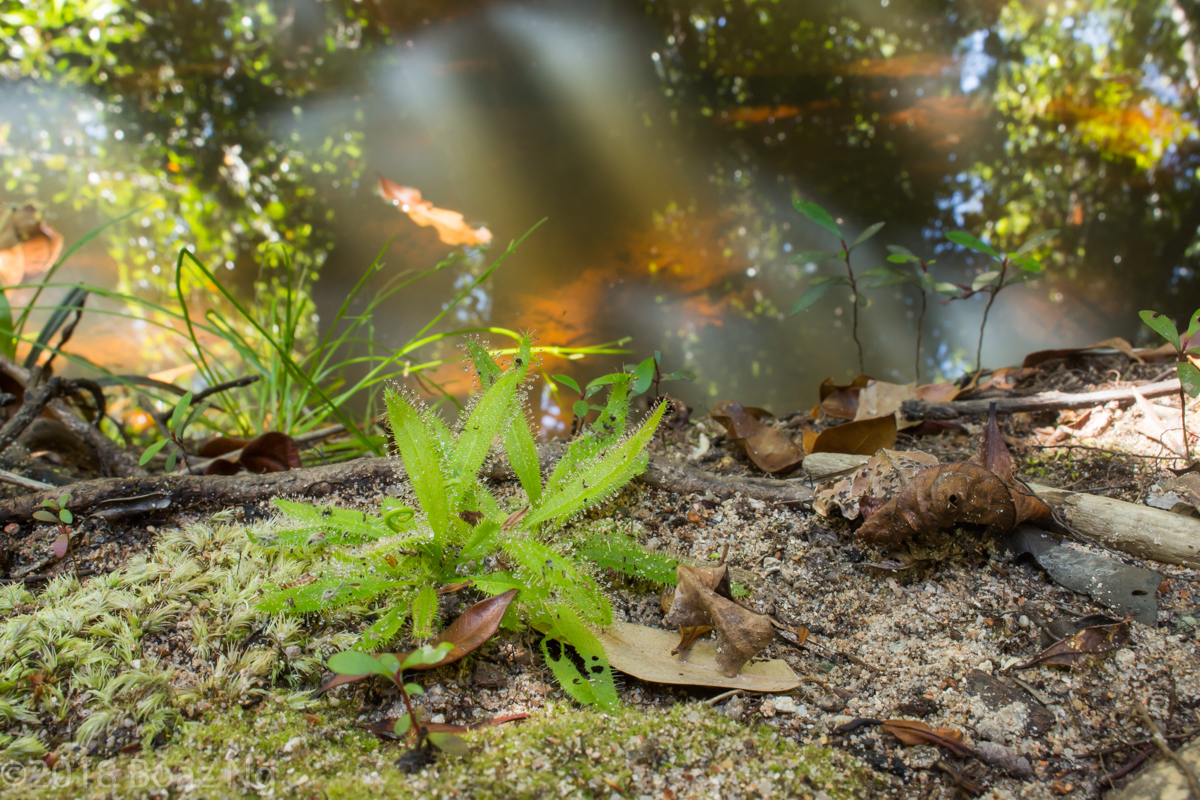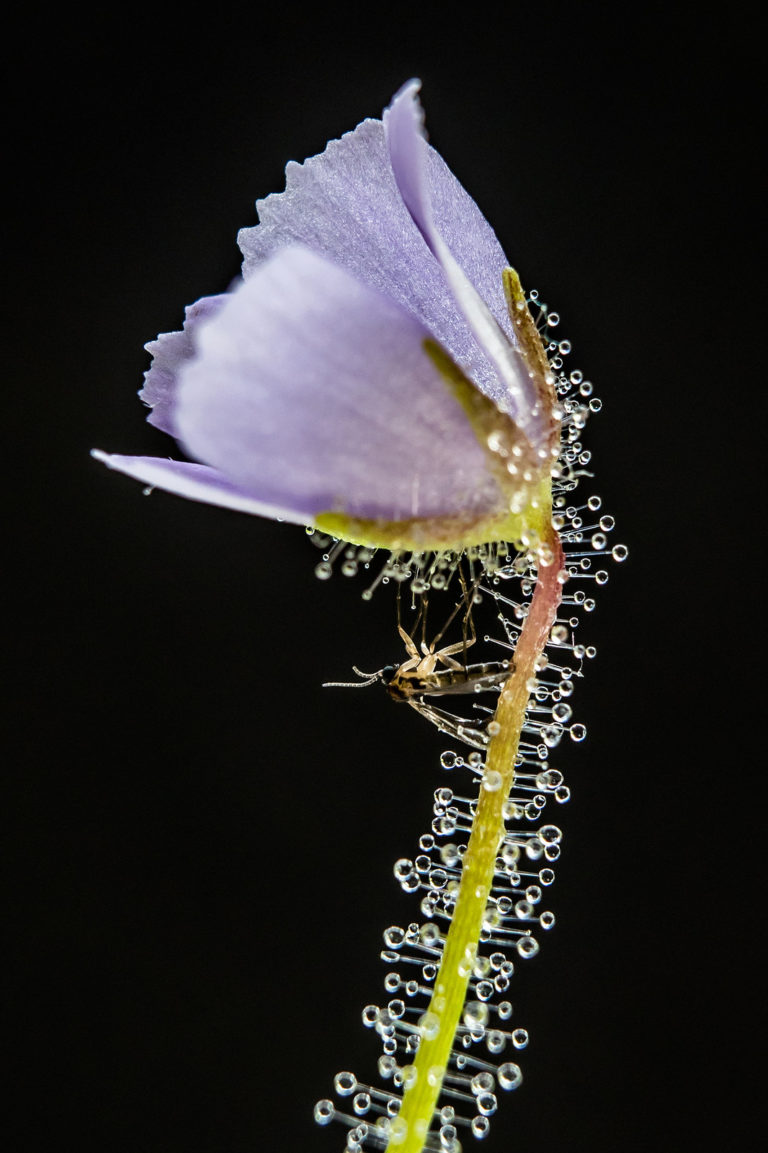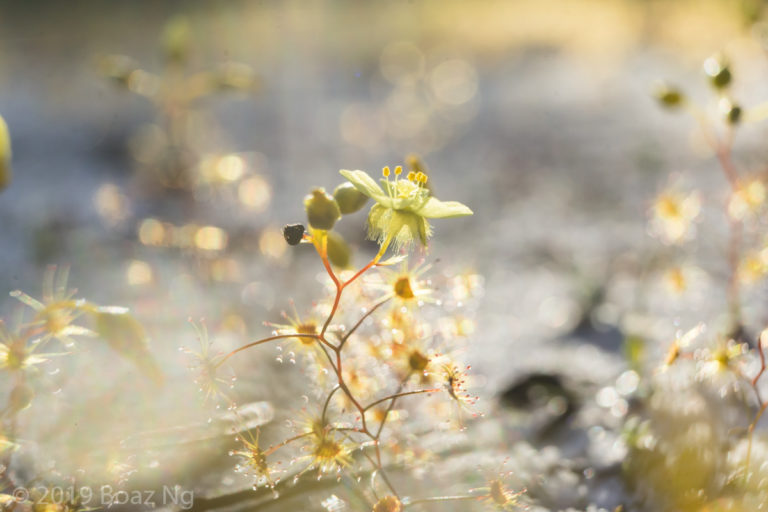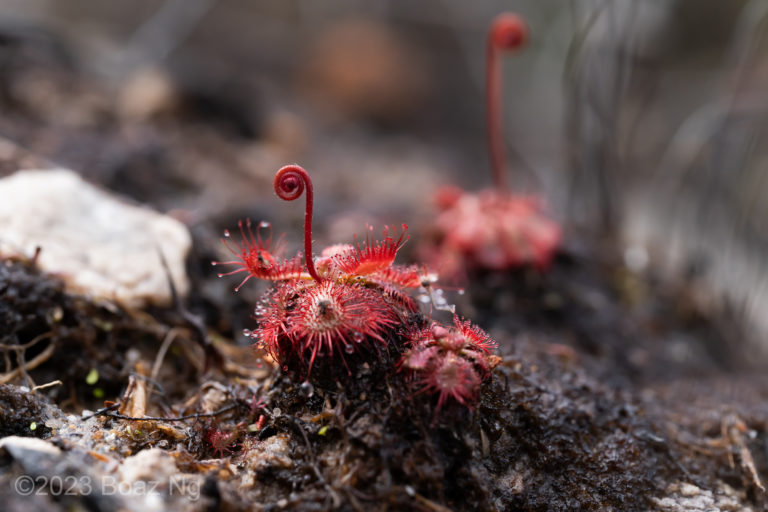Drosera adelae is the easiest species to cultivate amongst the three Queensland rainforest sundews. I can now understand why after observing the species growing wild in a wide range of habitats. Nonetheless, seeing the plants in nature challenged my perspective on how I should treat the species in cultivation.
Far North Queensland is a land of constant change.The wet season brings with it heavy rain, and periodic flooding can swell the watercourses into raging torrents. Conversely, during the dry season, many smaller creeks stop flowing altogether. Given these fluctuating conditions, it’s not surprising that Drosera adelae has adapted to grow in a wide range of conditions along the creeks of the Cassowary Coast.
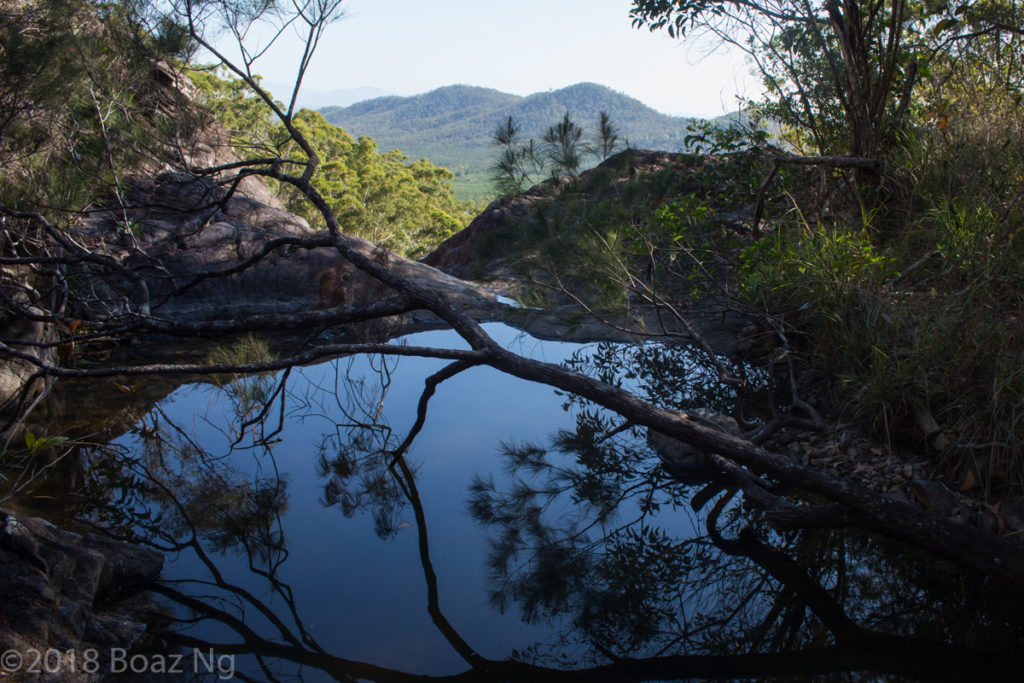
My first destination was a waterfall site where, despite the dry season reducing it to a trickle, I hoped to locate the plants. As I scaled the unstable cliff face to the top of the falls, I noticed that on the sandy banks of the creek were some sad, half-dead looking specimens of Drosera adelae! Despite the water level being only around 30 cm below the plants, the coarse sand was unable to soak up water sufficiently to counteract the drying effects of the hot sun. The plants had entered a dry-induced dormancy and most leaves had died back to the roots.
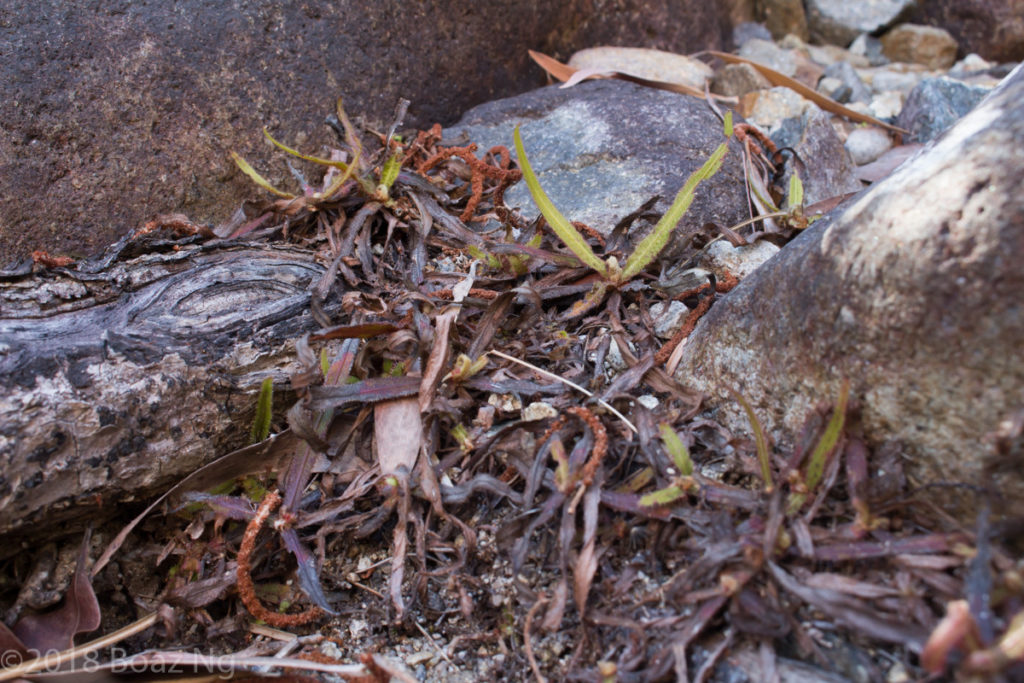
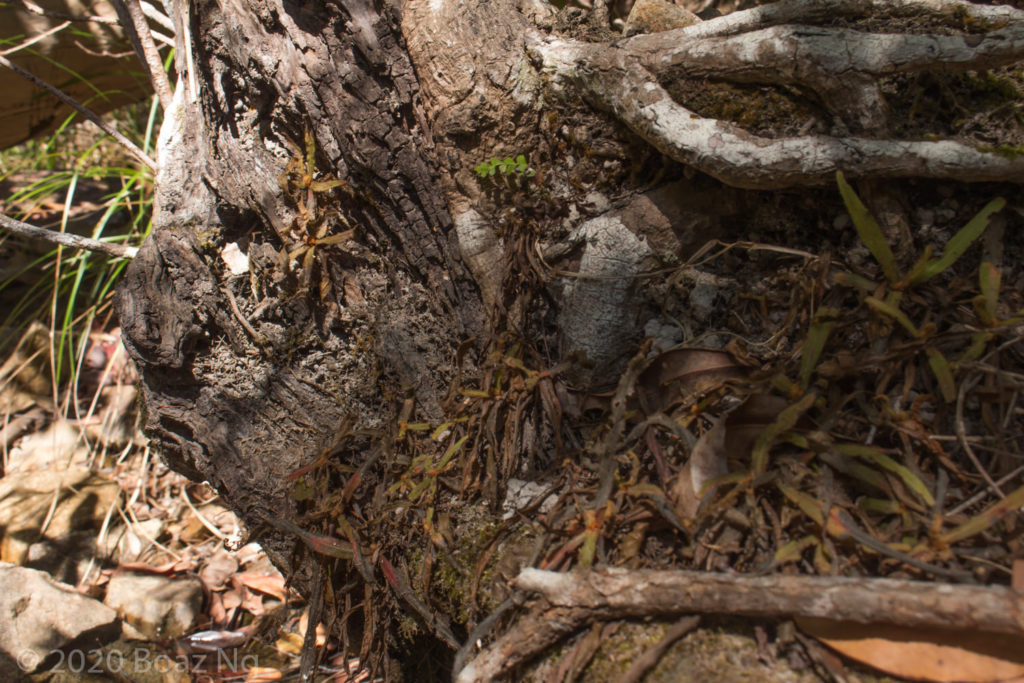
Heading to some of the smaller downstream cascades, I noticed that the crevices in the rock face were still wet with a tiny trickle of water. Sprouting from these cracks were several healthy specimens of D. adelae (and a whole heap of dormant plants). Contrary to conventional wisdom within the hobby, which suggests that full sun should be avoided, the site was open and fully exposed to the elements. It seems that the species is able to grow quite happily in these conditions provided that its roots are wet. At this time of year, the humidity isn’t ridiculously high (at a reasonable 70% RH or so) and in open areas like this, can be quite readily dissipated by the heat of the sun. Of course, during the wet season, the waterfalls would be flowing in full force and the population would receive a constant cooling mist.
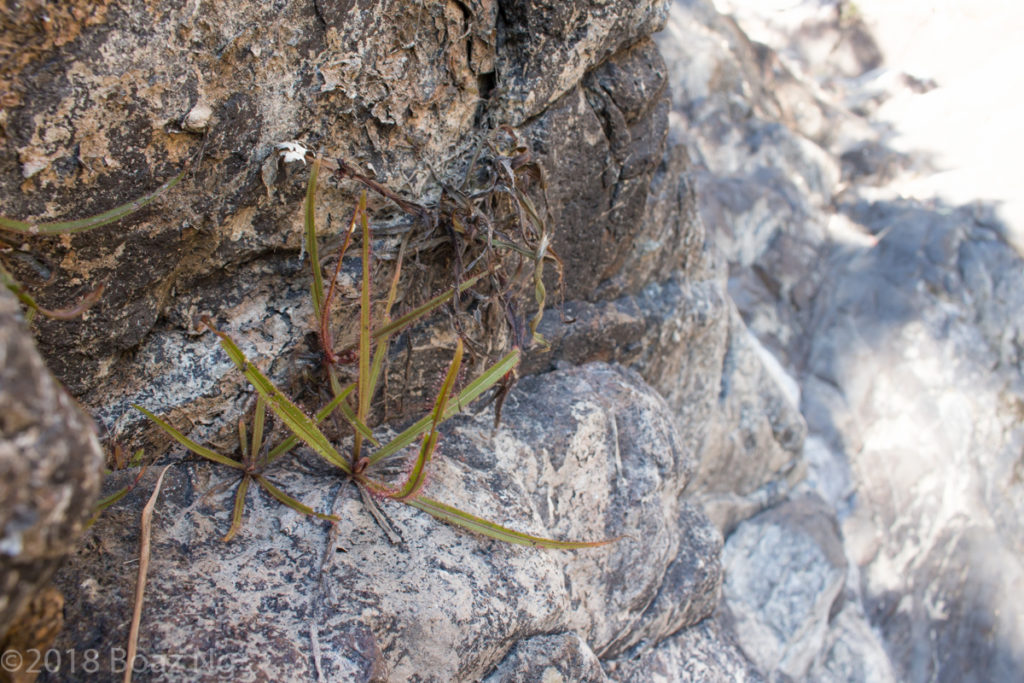
Eager to escape the stifling heat, I approached a wide-banked creek with a permanent flow of cool clear water. At this section, the granite creek flows through dry sclerophyll forest and was lightly shaded with dappled light. I noticed that growing submerged in the banks were Utricularia, indicating that the water was poor in minerals and suitable for the growth of sundews. With some searching, I was able to locate a single semi-dormant Drosera adelae plant growing in sandy bank that was stabilised by moss. Despite a fairly comprehensive search up and down the creek, I was unable to locate another specimen.
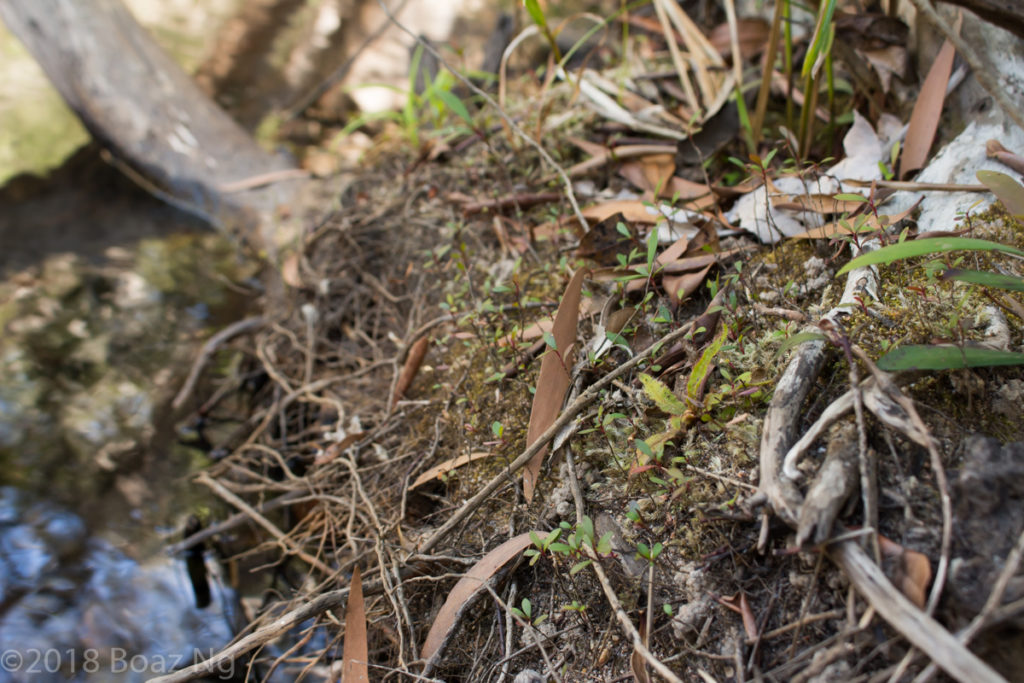
I hypothesise that populations of Drosera adelae are transient in the wild. Given the evidence of torrential floodwaters seen in most of the creeks in the area (debris wrapped high around trees), I would think that the lower stretches of these watercourses may be periodically stripped of sundews. Permanent population reservoirs likely exist up the mountainous headwaters of the creeks, where the effects of seasonal flooding are less severe. These upstream populations probably act to re-seed populations in the floodplains.
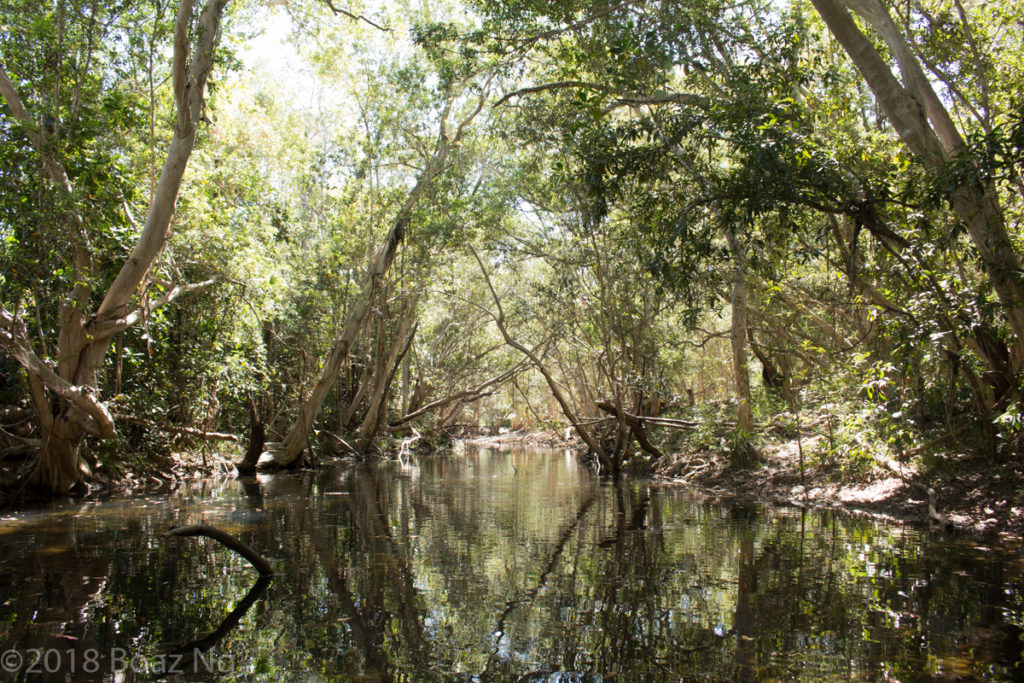
My final destination was a small creek, trickling amongst deep lowland rainforest. Here, I found the species growing alongside mosses on a sandy bank. In contrast with the previous habitats, this location was heavily shaded by tropical growth, with slow flowing waters that were deeply stained with tannins. Not surprisingly, the cooler, wetter and shadier niche meant that the plants were still actively growing and covered in thick dew. Compared to the slender bronzed leaves of the waterfall population, the plants here had wide bright-green leaves to compensate for the lack of light.
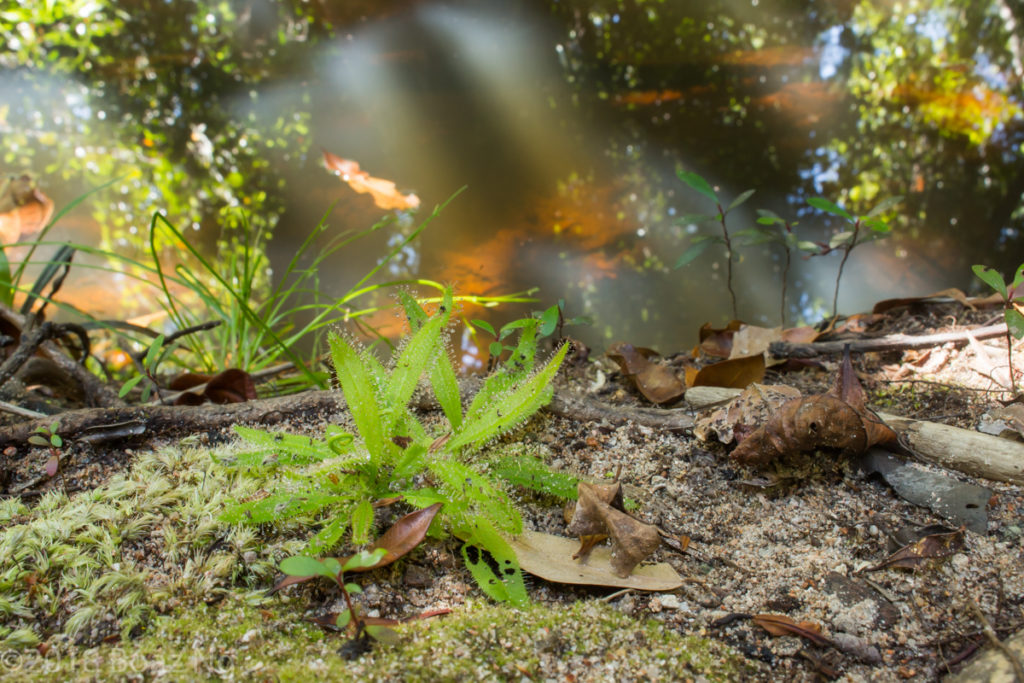
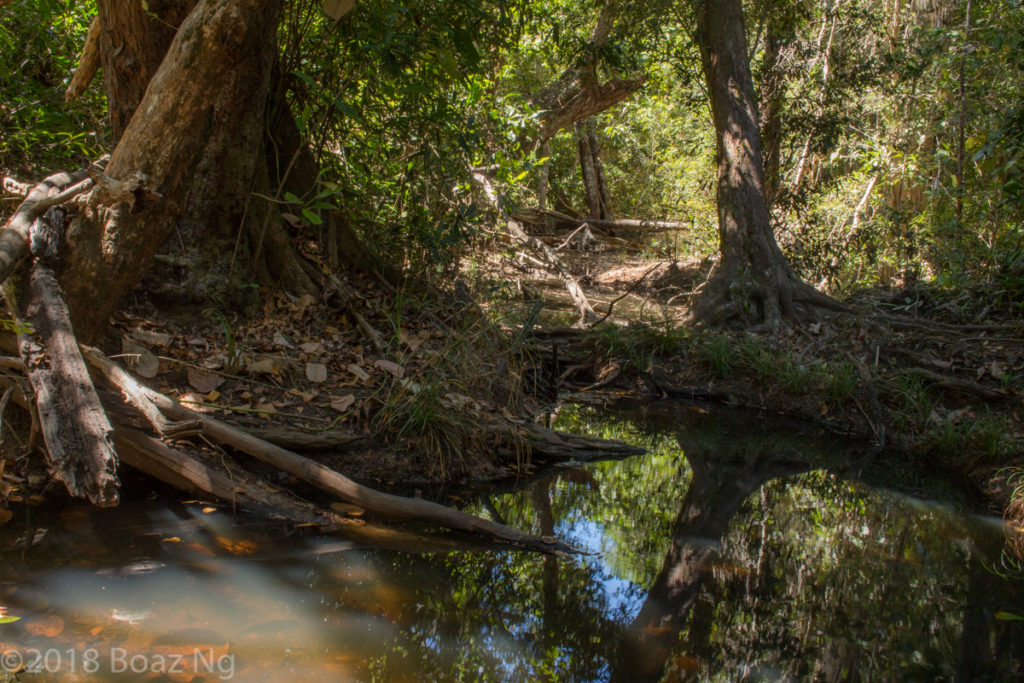
It is clear that Drosera adelae is able to adapt to a wide range of growing conditions, so long as certain key requirements are met. The common features of all three habitats I visited were a consistent source of water and a moderate to high humidity level. The species is able to withstand periods of drought, although it will enter a dry-dormancy and die back to its roots. In fact, most who cultivate the species would have surely encountered a ‘random’ and sudden die back event on occasion. Perhaps these events could be caused by insufficient water. Given its forgiving nature, it isn’t surprising that the species is widely represented in cultivation and considered the easiest of the three Queensland rainforest dews to grow.
As always, thanks for reading!
– Boaz

